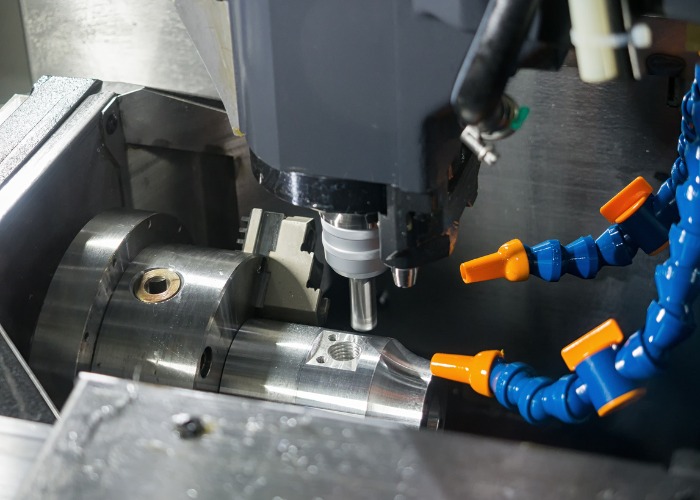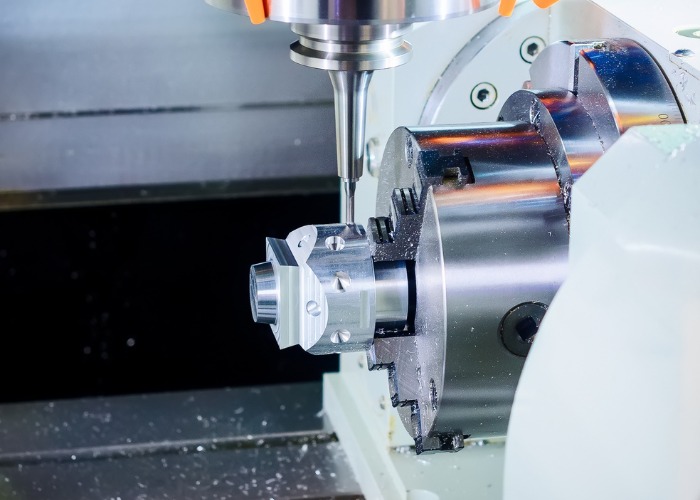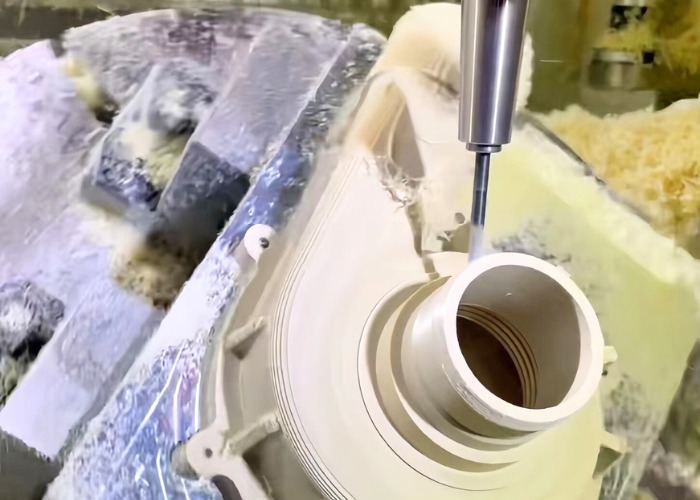
As the top representative of modern manufacturing technology, 5-axis CNC machining can realize the synchronous movement of tools in five directions, which can better ensure the high-precision machining of complex parts. This technology breaks through the limits of machining, not only can accurately shape complex geometries, but also can form multiple surfaces in a single clamping, significantly improving factory production efficiency. Moreover, the innovative technology of five-axis CNC machining not only marks a profound reform of the production method, but also a strong proof of the potential for future development of the manufacturing industry.
What is 5-Axis Machining?
5-axis CNC machining is an advanced manufacturing technology that mainly involves the structure and function of machine tools. It allows the machining tool to move simultaneously on three linear axes (X, Y, Z) and two rotary axes (A, B) , and the angle can be adjusted at any time, greatly improving the machining accuracy and flexibility. This technology not only effectively handles complex geometric shapes and curved surfaces, reduces the need for multiple positioning of workpieces, but also improves production efficiency and consistency.
Benefits of 5-axis CNC Machining
1.Complex Shape Processing Capabilities: 5-axis CNC machining is able to move tools on five different axes, making it easy to process complex geometries, making it particularly useful in industries that require high-precision parts, such as aerospace, medical devices, and automotive manufacturing.
2.High Precision and Repeatability: 5-axis machining can complete most or even all machining tasks in a single setup, improving accuracy and consistency by reducing the number of workpiece repositioning times.
3.Reduce process steps and Save Time: 5-axis CNC machining can process multiple surfaces in a single setup, significantly reducing process steps, shortening production cycles and increasing speed to market.
4.Improved Surface Quality: 5-axis machining enables the use of shorter tools, reduces vibration, improves surface finish, and reduces the need for post-processing.
5.Higher Production Efficiency: 5-axis CNC machining has high-speed cutting and positioning capabilities, which is suitable for mass production and can significantly improve production efficiency.

Types of 5-Axis CNC Machines
1.Head/Head
- Advantages: Because the table remains fixed, the head can move flexibly around the workpiece, suitable for machining large parts. This design reduces the risk of interference between the tool and the machine tool spindle head, and can process complex geometries more flexibly.
- Application areas: Commonly used in industries that require large workpiece processing, such as aerospace and large mold manufacturing.
2.Head/Table
- Advantages: This combination enables the machine tool to flexibly rotate the workpiece within a certain range, reducing the number of workpiece repositioning times and improving machining efficiency and accuracy.
- Application areas : Suitable for medium-sized parts processing, commonly used in automobile manufacturing and electronic equipment processing.
3.Table/Table
- Advantages: Since the head does not rotate, the workpiece movement path is more defined, and the operator can better predict and control the machining process. Suitable for processing parts with complex shapes such as undercuts.
- Application areas: Widely used in mold manufacturing, precision machining and industries that need to process complex curved surfaces.
5 Axis Machining Steps
1. Design Phase
- CAD Model Creation: The first step in the machining process is to create a computer-aided design (CAD) model of the part. These models are three-dimensional and precisely define the part’s geometry and dimensions.
- Model Optimization : After the CAD model is created, engineers and designers optimize the model to ensure it can be manufactured through CNC machining.
2. CAM Programming
- Generate CAM Program: Once the CAD model is complete, it needs to be converted into a Computer Aided Manufacturing (CAM) program. This process involves generating G-code or other CNC code that will instruct the CNC machine how to move and operate the cutting tools.
- Path planning: The CAM software will generate a cutting path based on the geometry of the part, defining the path along which the cutting tool moves to produce the desired shape. Parameters such as the tool’s feed rate, speed, and cutting depth are also taken into account.
3. Machine Tool Preparation
- Install and calibrate tools: Before machining, the operator needs to install and calibrate the cutting tools. The number and variety of tools for five-axis CNC machines are wide, and the appropriate tool needs to be selected according to the specific machining task.
- Fixing the workpiece: Fixing the workpiece to be processed on the worktable of the machine tool. This process is very important because the workpiece must remain stable during the processing to ensure accuracy.
4. Processing Execution
- Start machining: The CNC machine automatically performs cutting operations controlled by the CAM program. Five-axis CNC machines are able to move simultaneously on three linear axes (X, Y, Z) and two rotary axes (A, B), which allows the machine to machine the workpiece from multiple directions, reducing the need to reposition the workpiece.
- Real-time monitoring: During the machining process, the operator needs to monitor the operation of the machine tool in real time to ensure that the cutting tool runs according to the predetermined path and no errors or deviations occur. Modern five-axis CNC machine tools are usually equipped with advanced monitoring systems that can automatically detect and adjust machining parameters.
5. Post-Processing and Inspection
- Deburring and Polishing: Once machining is complete, parts may require deburring, polishing, or other surface treatments to achieve the desired surface finish and quality.
- Quality Inspection: Finally, the manufactured parts undergo rigorous quality inspection. Using tools such as CMM (Coordinate Measuring Machine), operators measure the parts to ensure that they meet the design specifications and tolerances.
Conclusion
5-axis CNC machining plays an important role in modern manufacturing technology, especially in machining complex geometries and achieving high-precision parts. It can significantly reduce the number of workpiece repositioning, thereby improving machining efficiency and product consistency.
By completing multi-faceted machining in one setup, 5-axis machining simplifies the production process and reduces many risks. With the help of this technology, engineers and manufacturers can efficiently and accurately complete complex manufacturing tasks , which is an indispensable tool in future manufacturing technology .
FAQs
1. What are the advantages of 5-axis CNC machining over 3-axis or 4-axis machining?
5-axis CNC machining increases precision and flexibility by allowing the tool to approach the workpiece from multiple angles, reducing setup times and ensuring consistent quality on complex geometries.
2. What types of parts are best suited for 5-axis CNC machining?
- Complex surfaces: parts with complex curves
- Reverse cutting: parts requiring multi-angle surfaces
- Precision Manufacturing: Aerospace components, medical implants, and automotive parts are all well suited for 5-axis CNC machining.
3.How does 3.5-axis CNC machining optimize your manufacturing process?
By machining complex parts in a single setup, 5-axis CNC machining simplifies production processes and reduces the number of workpiece repositionings .



